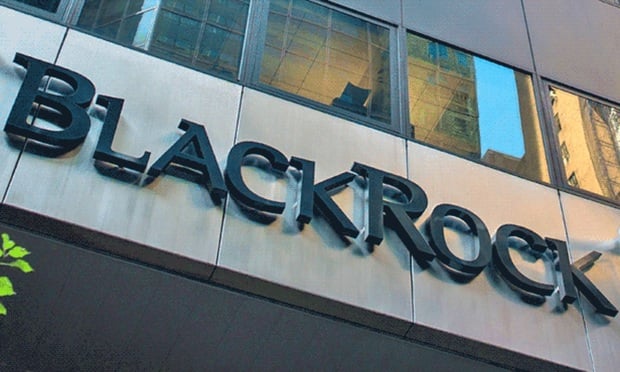The roughly 8,000 active participants in Visa Inc.’s $1.7 billion 401(k) plan are a fortunate lot.
For starters, the Bay area-based credit card provider pays its employees well, with a median base compensation of $130,000 a year. Only 10 companies offered higher base salaries in 2017, according to the recruiting website Glassdoor.
The company also offers a really competitive 401(k) plan, matching 200 percent of every dollar employees defer up to 3 percent of salary. For that level of generosity, and the plan’s low fees, BrightScope ranks the plan near the pinnacle of Visa’s peer group.
Now the plan may rank as the highest. In the wake of the tax bill’s passage, Visa is upping its match to 200 percent of deferrals up to 5 percent of pay.
For the median wage earner in the company, a 5 percent deferral amounts to $6,500. Counting the new match--$13,000--that makes for a $19,500 annual total contribution.
Under the previous structure, deferring 5 percent of the median salary would have meant a $7,800 (2 x 3 percent) company match, for a total annual contribution of $11,700.
Now, those able to defer 5 percent will realize more than $5,000 in increased company contributions.
What it means for a mid-career TDF investor
Vanguard’s target-date series accounts for 16 percent of the Visa’s plan assets, according to Form 5500 data.
A mid-career employee--in her 40s and earning the company median salary--who is defaulted into the Vanguard Target Retirement 2040 Fund would contribute $429,000 between now and retirement under the new match formula, if she manages to defer 5 percent of her salary.
The average annual return in the 2040 Fund has been 7.39 percent. Assuming the participant starts with an account balance of zero, her account can grow to $1.04 million over the next 22 years if she maintains the 5 percent deferral.
Under the new match formula, about $650,000 of that will result from company contributions.
If she is starting with $100,000 in her account, the balance at retirement would surpass $1.5 million.
Under the previous match structure, and assuming the same numbers, she would amass a 401(k) account balance of $765,335 at retirement. Had she started with $100,000 in savings, she would amass $1.24 million.
‘We don’t know where this is going to go’
Visa joins Aflac and SunTrust as the companies that are using the windfall of a lower corporate rate to bolster retirement savings plans. Visa’s effective tax rate has been about 29 percent over the past five quarters. The new corporate rate falls to 21 percent, starting this year.
Of the companies that have passed on savings to employees, most have done so in the form of one-time bonuses or increases in wages for the lowest earners.
Whether more companies will use tax savings to invest in retirement plans is unclear, says Gregg Levinson, a senior retirement plan consultant at Willis Towers Watson.
“This is no doubt fantastic for these employees,” Levinson told BenefitsPRO. “But in terms of a trend, we don’t know where this is going to go.”
The small cash bonuses some companies are offering will likely be spent immediately and amount to little more than a sugar high in terms of real capital and personnel investment, whereas the new investments in retirement plans will result in greater, long-term realized economic benefits, said Levinson.
But as a consultant who spends much of his time advising plan sponsors on how to improve retirement savings outcomes, Levinson is not yet convinced that offering aggressive new match formulas is in sponsors’ best interest.
“There is a hesitancy in my mind,” he said. “Tax reform might change and look like something entirely different two to four years from now.”
The new corporate rate is “permanent” in the sense that it is not scheduled to sunset within the 10-year budget window.
Political majorities in Congress, however, are not. If Democrats were to gain control of Congress in the foreseeable future, the new tax law would not prevent them from passing legislation to increase the corporate rate.
“On the one had, improving retirement plans is an excellent idea. But if in two years, or five years, the tax windfall dries up, and increased matches prove to be difficult to maintain, then it could be really hard to pull back the increased contributions,” he said.”
Participants often perceive company 401(k) matches as expected entitlements. Clawing them back is a position sponsors will want to avoid, said Levinson.
Still, the well-publicized moves that Visa, Aflac, and SunTrust have made will no doubt force competitors to consider the value of the retirement benefits they offer, particularly if higher standards continue to emerge.
Levinson says it is simply too early to calculate how tax reform and increased 401(k) matches could impact employee retention and acquisition trends as the labor market continues to tighten.
Increased matches will definitely earn good will with employees, said Levinson. But he cautions that health benefits, other fringe benefits, and base compensation packages tend to outweigh 401(k) plans when workers consider changing jobs.
© Touchpoint Markets, All Rights Reserved. Request academic re-use from www.copyright.com. All other uses, submit a request to [email protected]. For more inforrmation visit Asset & Logo Licensing.







